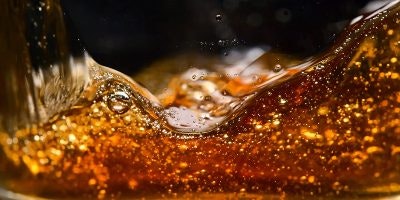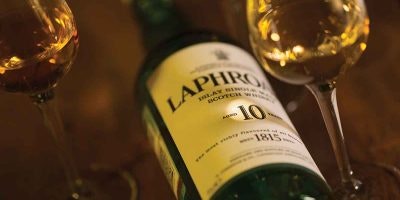Rye whiskey has absolutely exploded in the past five years. The result is a huge spectrum of rye whiskey on the market, across a wider range of profiles and styles than most consumers realize.
Before diving into all of that delicious diversification though, it’s worth clearing something up. What’s the deal with Canadian rye whisky?
So what is Canadian rye whiskey?
Calling Canadian whisky “rye whisky” is somewhat misleading. It’s a historical holdover, yet even today, “rye whisky” is often used to describe all Canadian whiskies, even if that whisky does not hold up to American definitions, i.e., a mash bill of 51% rye or more.
Field of Rye / Photo Credit: Daniel Hansen
For instance, in Crown Royal’s new Cornerstone Blend, the “Coffey rye” component has what would be, in America, a bourbon mash bill of 60% corn, 36% rye and 3% malted barley. Yet it’s called their “Coffey rye.” Therefore, while perusing anything Canadian, be sure to examine mash bill specifics to see if the juice in the bottle is rye or “rye”.
Moving beyond that, all of the major American whiskey producers are heavily investing in rye whiskey right now. With sales skyrocketing and consumer interest soaring, if you’re a big name in American whiskey, chances are, you want in on rye.
American rye whiskey
That includes longtime rye players who have boosted production and are expanding product portfolios, such as Wild Turkey, including their Russell’s Reserve offshoot, and Jim Beam. Elsewhere, that includes producers venturing into rye for the first time, such as the case with the still relatively new Woodford Reserve Rye. Even Jack Daniel’s is getting into the rye game with a new Single Barrel Rye release that just hit store shelves at the start of 2016.
Heaven Hill released a 6-year-old, 110 proof expression of Pikesville Rye, distilled at the Bernheim Distillery in 2015. The Pikesville brand has historic ties to Maryland, but was purchased and reborn in Kentucky. Heaven Hill also notably produces rye whiskeys such as the popular Rittenhouse Rye.
Michter’s 10 Year Single Barrel Rye / Photo Credit: Ashlee Meyer
One fun and funky sub-category to explore is that of Rock & Rye. It’s a saloon-era spirit made from rye whiskey, spices, and rock candy sugar. New York Distilling Company distills and bottles Mr. Katz’s Rock & Rye, and Cooper Spirits produces 86-proof Slow & Low as well as a 100-proof edition.
Cooper Spirits also bottles other unique offerings. One is Hochstadter’s Vatted Straight Rye Whiskey, the first rye on the market use the “vatted” designation. Essentially, that means they’re buying straight rye whiskeys from various distilleries and blending them together, in the fashion of a blended Scotch whisky. According to the company, they sourced whiskies from distilleries in Kentucky, Pennsylvania, Indiana and Alberta, Canada, at a range of four to 15 years of age.
Rye whiskey sourced from Indiana
Speaking of rye whiskey from Indiana, and sourcing whiskey, much of the rye whiskey on the market from startup companies and assorted non-distiller producers is from Indiana’s MGP. Most famously it’s with MGP’s 95 percent rye mash bill, although they offer several rye variations for sale. As the story on sourcing continues to be stated, as long as brands aren’t lying to customers about it, there’s nothing wrong with the practice.
Redemption Whiskey, for instance, is quite straightforward that they source their 95 percent rye whiskey from MGP. Their standard release is aged for roughly two and a half years, but they also just unveiled a line of older barrel proof rye whiskeys. The 7-year-old edition is bottled at 122.6 proof, the 8-year at 121.5 proof, and the 10-year at 110.1 proof.
High West Kippee Ki-Yay / Photo Credit: Jordan Wiegman
Another openly-MGP-sourcing company is Park City, Utah’s High West. They play around with their sourced spirits, bottling a bourbon + rye blend, Bourye, as well as a whiskey incorporating bourbon, rye, and a hint of peated Scotch, Campfire. Their latest is Yippee Ki-Yay, finished in Syrah wine and vermouth barrels for a unique sweet riff. The entire lineup from High West is a great example of taking a starting point, i.e., a sourced whiskey, and doing something to make it both better and more unique.
American craft distillers making rye
But there are quality brands who are actually distilling the stuff themselves. Dad’s Hat Pennsylvania Rye Whiskey took home Whisky Advocate’s 2015 Craft Whiskey of the Year award designation, no small feat. Other craft producers making rye whiskey worth a look include Catoctin Creek, FEW, and newer entrants, such as Spirit Works. Michter’s is transitioning back into the world of distilling, although that will still be a lengthy process.
The list could go on and on, and one reason that so many smaller distilleries are making rye is that the large brands don’t yet have enough supply on hand to consistently meet demand. Smaller distilleries are releasing younger ryes, often aged in small barrels, and finding great success as all things rye are in the limelight.
Expect plenty more releases on the way from both the big boys and smaller distilleries alike. Long story short, it’s a good time to be a fan of rye.
Want to discover new rye whiskeys?
With Distiller, you’ll always know what’s in the bottle before you spend a cent. Rate, Review, and Discover spirits! Head on over to Distiller, or download the app for iOS and Android today!



